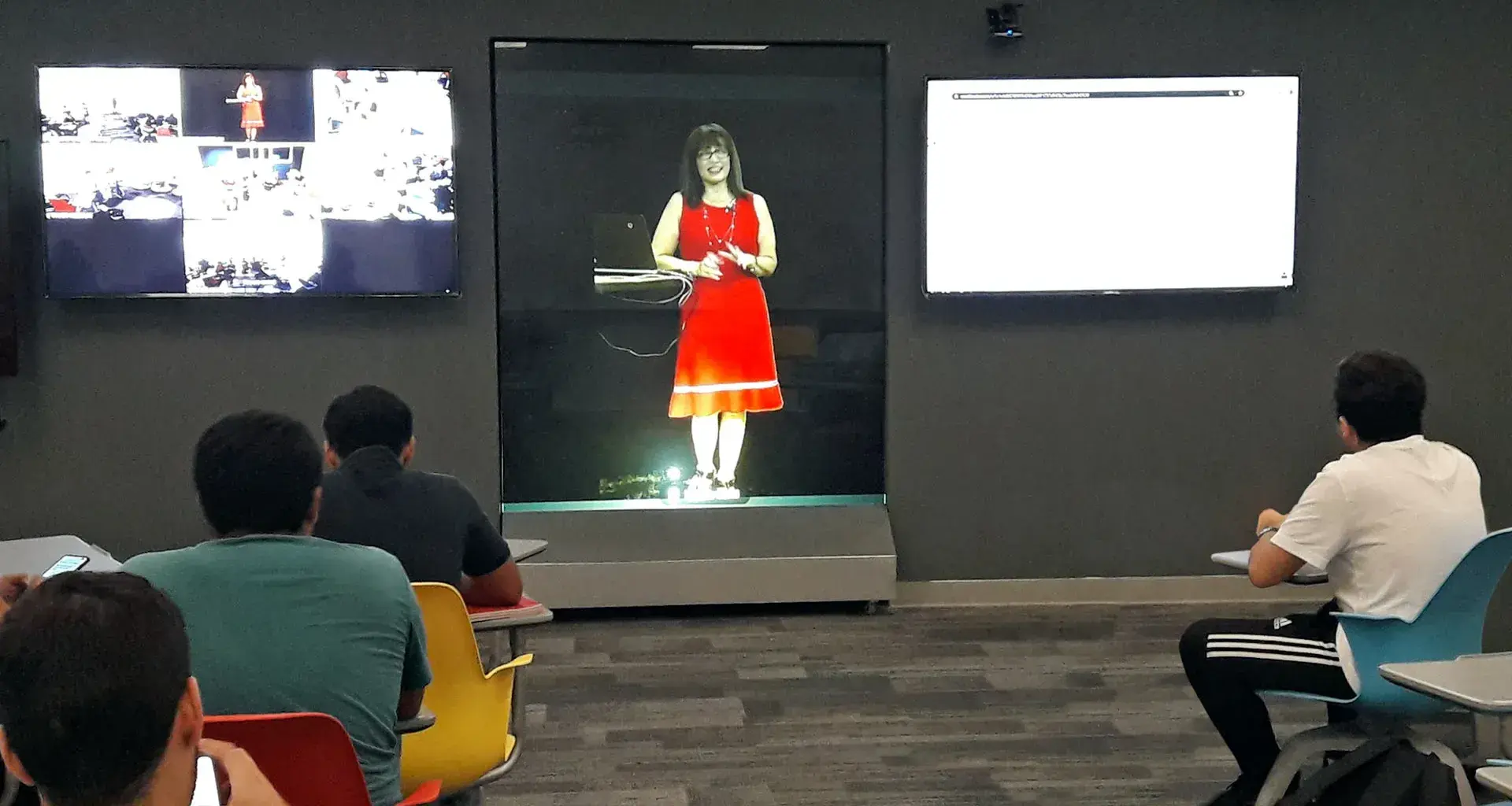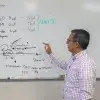“When they invited me to teach like this, as a hologram, I immediately thought of Star Wars,” recalled Jacob Escobar, a professor at Tec de Monterrey, who’s been teaching for a year via 2D holographic projection.
Although he was already teaching a subject remotely for the northern region campuses via video conferencing, he says that the Hologram Professor project makes his classes almost feel as if they were face-to-face.
This project uses telepresence technology to simulate a hologram effect, with the idea of humanizing the distance teaching/learning experience, and creating a similar dynamic to face-to-face classes.
The project, which started in August 2018, making the Tec the first academic institution to use this technology in its classes, was awarded two prizes at the QS Reimagine Education Awards.
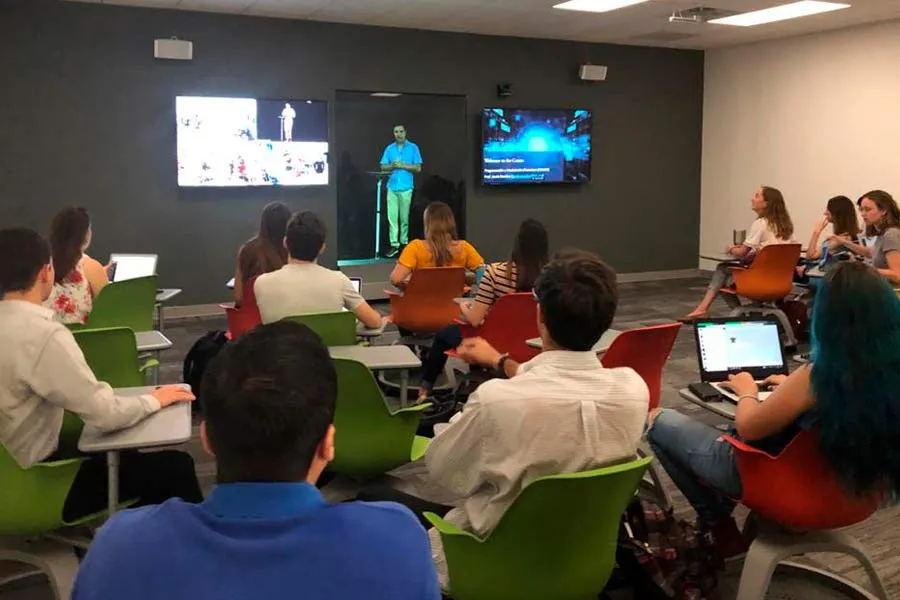
“Globally, these awards are known as the education Oscars,” said Patricia Aldape, director of Innovation for Learning Experiences at Tec, to CONECTA.
“Winning this award is a special honor because it’s an international competition that rewards very innovative initiatives aimed at improving student learning outcomes and employability,” she added.
She pointed out that this call rewards projects that achieve outstanding standards of innovation, scalability, efficiency, and originality.
An “almost” face-to-face learning experience.
Before the pandemic, Jacob would go to a room equipped with screens, monitors, and a camera, twice a week. From there, he would give his Financial Modeling and Programming class.
“I’ve never been in a television studio, but I imagine it must be very similar,” he told CONECTA.
“This technology has a lot of potential. I think it’s better than video conferencing because it’s more interactive, more fluid, and closer. I feel that it can still be improved, for example, with visual effects to make the class more interactive,” he added.
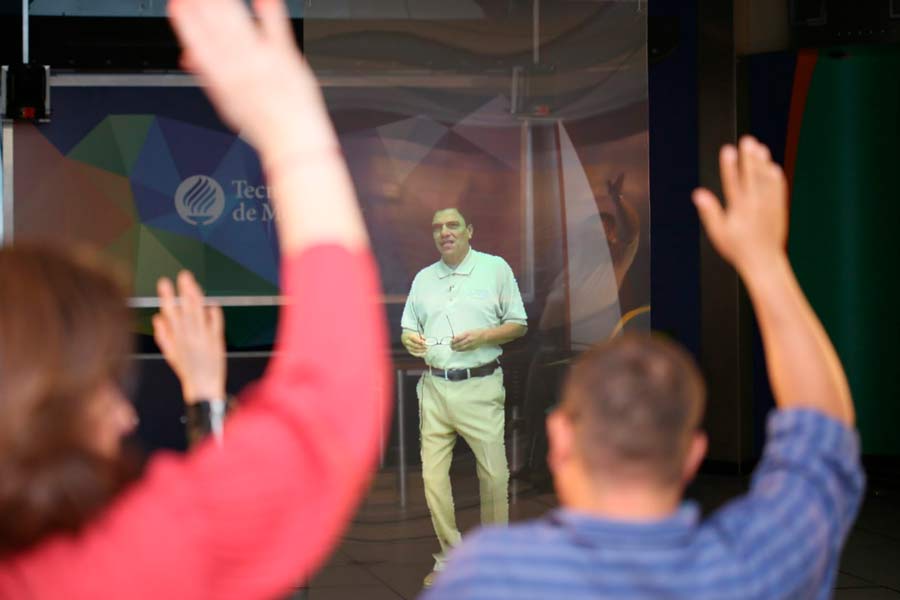
What’s more, the innovation provides an anatomically correct image, allowing teachers to be seen life size, and generating -via holography- a social presence that provides an “immersive” experience for students.
Currently, the Tec has 11 receiver rooms and 2 transmitter rooms -at the Monterrey and Santa Fe campuses- equipped with cameras, monitors, staff, and the necessary technology for teachers and students to interact.
“Through several investigations we’ve found that there’s no significant difference in classes with or without a hologram. It’s proven to be a great means through which you can learn,” said the director.
This innovation has been taken to various universities and institutions located in around 15 countries in America, Europe, Asia, and Africa.
The Tec’s educational innovation rewarded
The “Hologram Professors humanize and bring accessibility to the distance education experience” project won the Silver Award at the QS Reimagine Education international educational innovation competition.
The director highlighted that the project -with an impact on more than 10,000 students and 300 teachers within and outside the Tec- has won the award in the ICT Tools for Teaching, Learning and Support Innovations category.
“It’s a very special honor because it positions the Tec on the world map of educational innovation, and recognizes its originality, scalability, and innovation due to the use of hologram professor technology,” said Aldape.
In addition, she pointed out that the Hologram Professor project was also recognized at the People’s Choice Award competition, winning the most votes during the global call.
“The project attracts a lot of attention and people are impressed by the fact that the students can interact with the teacher in real time (...) At the Tec, we continue to be pioneers in the use of this technology, nobody else is teaching classes through a holographic effect,” she said.
How the hologram professor has evolved at the Tec
On August 21, 2018, Tec students from the Monterrey, Saltillo, Chihuahua, Laguna, and Tampico campuses were the first to take a class using the system.
Physics 1, taught by Professor Alfonso Serrano, was the first class in which the system was used.
At that time, the project was part of the research of professors Eduardo Luévano, Eduardo González, and Eduardo López.
“At the Educational Innovation Department, our mission is the strategy of deployment and scaling of educational innovation at the institution (...) there was this technology that hadn’t been used, so we took it and we scaled it up,” said Aldape.
“We even improved the technology that the professors had from point-to-point to point-to-multipoint. We worked to scale the project and one thing of value is that it’s not only been for the benefit of the Tec, but it’s also served other institutions”.
Aldape said that since then, the Vice Rector’s Office for Academic Affairs and Educational Innovation has worked in collaboration with the Tec’s School of Engineering and Sciences to scale the project, not only in the technological field, but also in teaching.
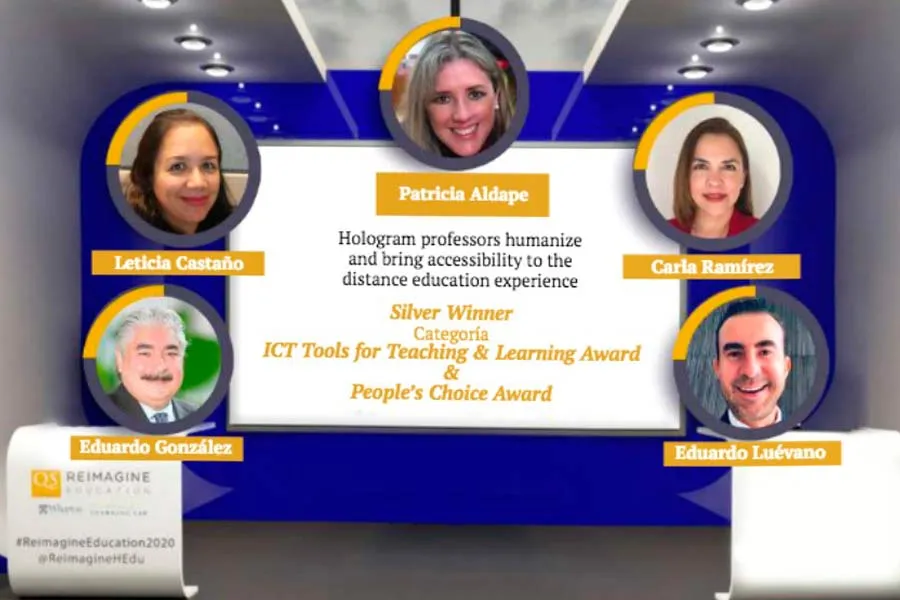
There are currently three models for using the Hologram Professor system:
- Collegiate / Team Teaching
The hologram is rotated between several teachers during the course, giving students the opportunity to learn from several teachers and experts.
- Expert
The hologram is taken by a single teacher who teaches the entire course for several receiver locations, and there’s a facilitator who accompanies the students in person.
- Guest
One or more external experts are invited to the class. The teacher from each campus accompanies the students in person during the sessions, with the guests in holographic form.
“We train teachers to use the technology. Once they get used to it, it’s very easy for them to use it. We accompany them in the deployment and planning of their sessions,” noted the director.
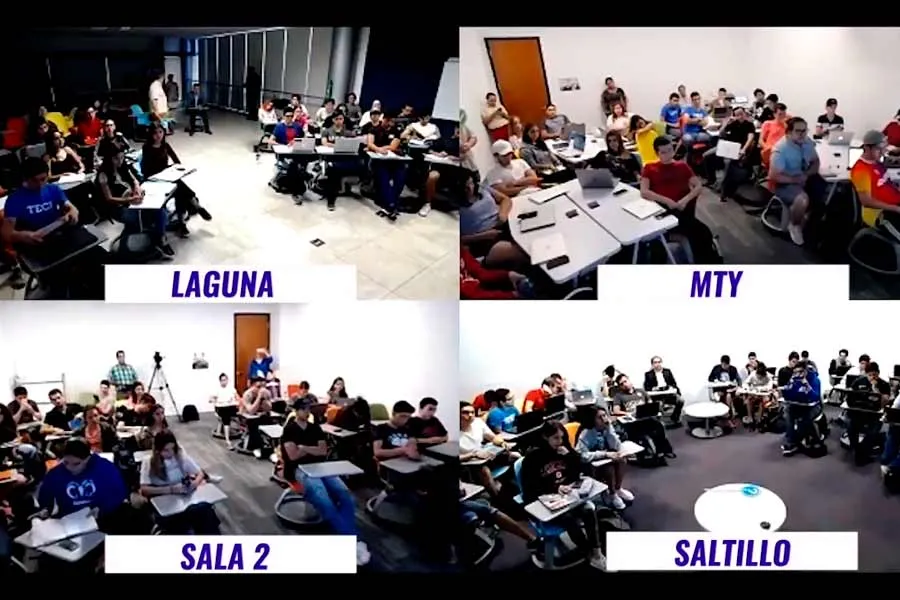
In addition, she said that they’ve carried out studies on the project, with results that indicate that the students’ perception has a high percentage of approval of the experience.
“There’s a high level of motivation for active participation and punctual attendance. They highly value the didactics, access to different experts in the field, intercampus interaction, and the use of technological tools,” said Aldape.
Tec21 Model program also achieves a distinction
The project “Week 18, Stop to move forward” was the winner of the Bronze Award in the Learning Assessment Award category of the QS Reimagine Education Awards.
Week 18 is a training unit that’s part of the Tec21 Model’s academic programs, in which students must participate in individual and group activities with 4 objectives:
- Guiding them in their learning
- Giving them learning alternatives
- Promoting the development of their skills
- Strengthening their subject identity and integration with the student community
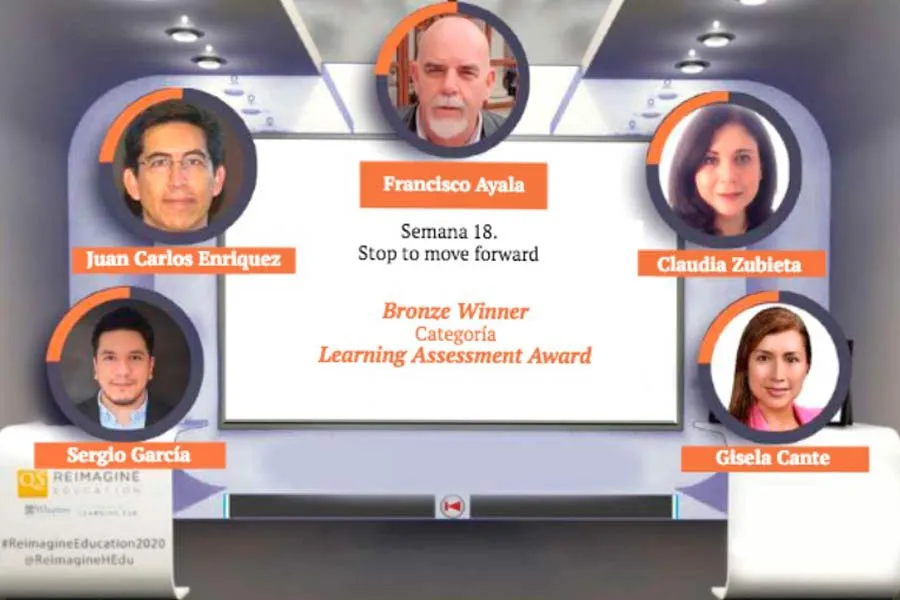
In total, 13 categories are awarded in the competition organized by the company QS Quacquarelli Symonds -producer of the QS World University Rankings- and the Wharton School of the University of Pennsylvania. This year, the Tec participated with five projects in a number of categories.
In the international educational innovation competition for 2020, 1,417 projects were put forward from various universities and companies in 70 countries, of which only 120 went to the final rounds and there were 39 winners.
YOU SHOULD ALSO READ:

